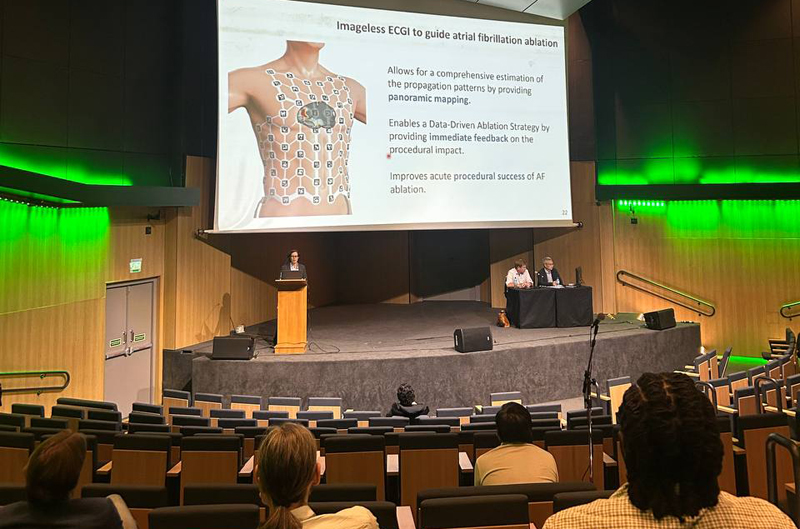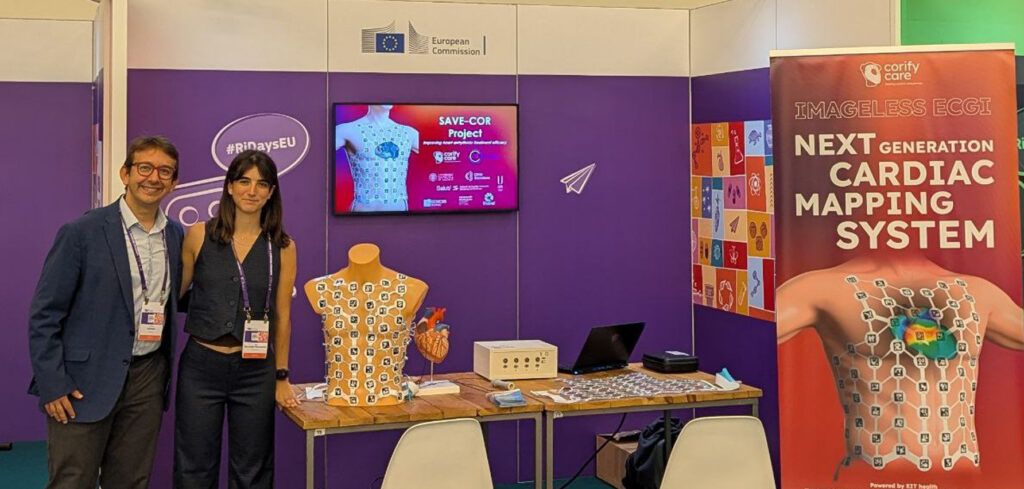During September, the COR group from the ITACA Institute at the Universitat Politècnica de València (UPV) shared its scientific progress at international forums, presenting advances in the development of noninvasive techniques for the diagnosis and treatment of cardiac arrhythmias using artificial intelligence and bioelectromagnetism.
These achievements strengthen the group’s commitment to scientific excellence and innovation aimed at improving cardiovascular health.
At the international conference Computing in Cardiology 2025 (CinC), held in São Paulo, Brazil, COR-ITACA researchers played a highly prominent role. Clara Herrero Martín presented a study on the noninvasive characterisation of atrial fibrillation, which will enable more accurate diagnoses and the design of more precise therapeutic strategies.
Carlos Fambuena Santos showcased the latest advances in the development of cardiac digital twins—an emerging technology paving the way for personalised and noninvasive therapies.

In addition, María S. Guillem, Director of the ITACA Institute and Head of the COR group, delivered a lecture on new methodologies for image-free cardiac electrical mapping. Team members Jorge Vicente and Rubén Molero also presented complementary research on arrhythmia diagnosis and modelling.
“These results consolidate COR-ITACA as a leading group in the application of artificial intelligence and bioelectromagnetism for the noninvasive management of cardiac pathologies«, highlighted María S. Guillem.
European Research and Innovation Days
The group’s international activity also extended to the European Research and Innovation Days, held in Brussels on 16–17 September. At this event, Andreu Climent and Jana Reventós, ITACA researchers, presented the results of the European project SAVECOR, coordinated by the ITACA Institute and finished in December 2024. The project was recognised as the best European initiative for its impact on cardiovascular health.

Specifically, SAVECOR developed ACORYS®, an innovative solution that noninvasively identifies the cardiac region where an arrhythmia originates. It combines advanced 3D image-processing software with a 128-electrode high-density system capable of generating a detailed map of the heart’s electrical activity.
For María S. Guillem, Director of the ITACA Institute, these achievements highlight the importance of transferring the knowledge generated at the university into clinical practice and society.
“Only through this transfer can research translate into tangible improvements in people’s health”, she stressed.
With these contributions, COR-ITACA reaffirms its commitment to advancing science, promoting knowledge transfer, and developing more precise, personalised, and noninvasive medicine for the treatment of cardiac arrhythmias.



